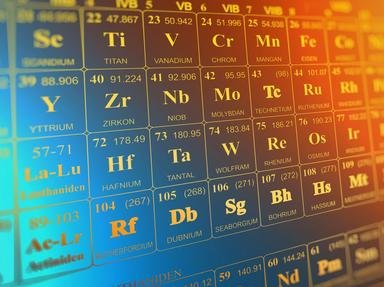
Germanium and Friends Trivia Quiz
Distributed down the columns of the periodic table are a diverse collection of elements discovered in Deutschland. Ten are listed below, you just need to determine whereabouts on the table they can be detected - in its 'd-block' (groups 3-12) or not.
A classification quiz
by Team Phoenix Rising.
Estimated time: 3 mins.
- Home
- »
- Quizzes
- »
- Science Trivia
- »
- Chemistry
- »
- Periodic Table